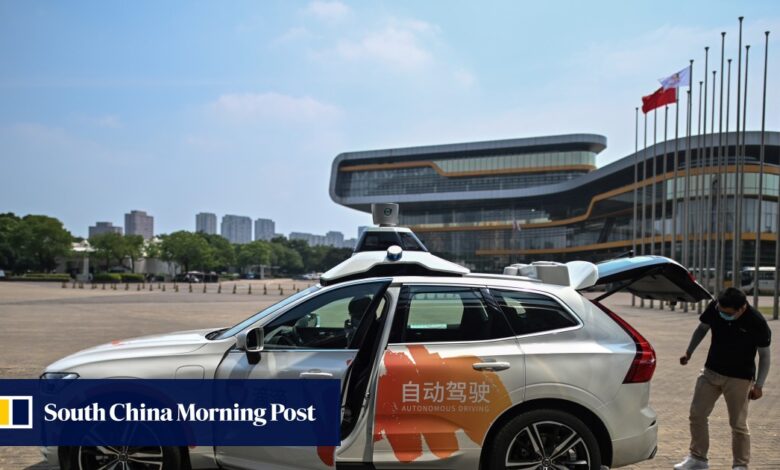China to allow driverless car tests on highways, putting it in the same lane as US, Germany and UK

China has drafted new rules that legalise autonomous driving (AD) tests on highways, putting it in line with the US, Germany and the UK, as the country’s new vehicle makers and autonomous driving companies speed on towards a driverless future.
The Ministry of Industry and Information Technology’s (MIIT) new draft regulations allow for “road testing and example application of smart connected vehicles”, and highways are permitted as one of the scenarios to test driverless cars.
The draft, published this week and open to public feedback, is expected to be implemented soon if there are no strong objections. It marks a step forward for the industry as Beijing has been relatively cautious on tests of the new technology to date. For example, the BMW Group started testing autonomous vehicles on Germany’s highways in 2011.
Since 2018, China has allowed autonomous driving road tests – not on highways – handling a total distance of more than 2 million kilometres “without a severe accident”, the MIIT said. The new rules should also allow the domestic industry to catch up with some US states like California and Florida, and countries such as the UK.
MIIT said China is now allowing driverless testing on highways because “relevant enterprises and universities have developed intelligent connected vehicles that can run on expressways and there’s strong demand from the industry for conducting road tests in a broad range of scenarios”.
Smart internet-connected cars, known as intelligent connected vehicles (ICVs), are seen as the automobile industry’s future. Technology companies are currently working with carmakers to develop a range of advanced in-car sensors, controllers, and other devices that enable the exchange and sharing of information between vehicles and other transport elements, such as individuals and roads.
To get an AD car on the public road, the vehicle must pass safety tests and run normally on restricted roads and test parks. However, a human driver must still sit in to monitor and take over “when necessary”, the regulation says.
“Traffic on highways is simpler [than city roads], but poses a larger challenge for the automated system. For example, the perception system – which processes data from the sensors – will become less accurate when the vehicle speeds up,” said a China-based autonomous driving engineer, who works for a major German carmaker but who requested anonymity due to company policy.
China is expected to become the world’s largest autonomous driving market by 2030, by which time sales of Level-4 self-driving cars (where the vehicle can handle the majority of driving situations independently) are expected to account for 24 per cent of global AD car sales, according to a recent report by consultants Deloitte.
Under China’s new rules, companies or institutes are required to apply with the city or provincial government in which they would like to test the cars, and the qualification will “in principle” be valid for 18 months. They must also file a phased summary report every half a year.
Source link



